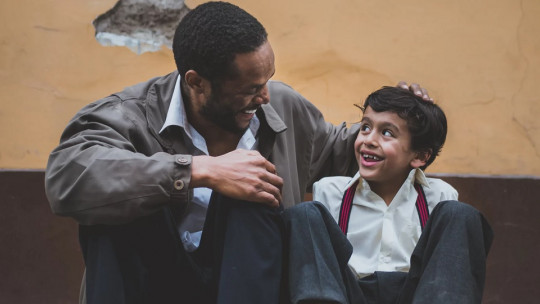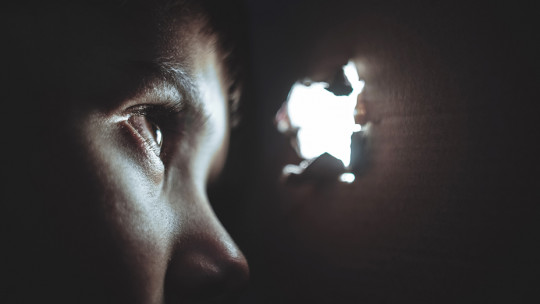When we set out to learn something, we do not always do so through our direct experience; Many times we look at what others do.
This is called vicarious learning , a phenomenon that, as simple as it may seem, when it was first formulated by the psychologist Albert Bandura, represented a revolution in the field of behavioral science. Let’s see why.
What is vicarious learning?
Technically, vicarious learning is the type of learning that occurs when observing the behavior of other individuals (and the results of those behaviors) leads to a conclusion about how something works and what behaviors are most helpful or most harmful.
That is, it is a form of self-education that occurs when we pay attention to what others do not to imitate them for the simple fact that they do it just as would happen in fashion, but to see what works and what doesn’t.
The term “vicar” comes from a Latin word that means “to transport”, which serves to express that in it knowledge is transported from the observed to the observer.
Neurobiology observational education
Vicarious learning exists among members of our species because within the human brain there is a class of nerve cells known as mirror neurons. Although we still do not know very well how they work, it is believed that these neurons are responsible for making us capable of put ourselves in the shoes of others and imagine what it would be like to experience what they do in our own body
It is also believed that mirror neurons are responsible for such curious phenomena as yawning infections or the chameleon effect. However, between the neurobiological and behavioral levels there is a large conceptual and methodological empty space, so it is not possible to know exactly how these “micro” processes translate into behavioral patterns.
Albert Bandura and social learning
The concept of vicarious learning began to take shape with the appearance of Social Learning Theory in the mid-20th century. At that time, the psychological current that had been dominant in the United States, the behaviorism of John Watson and BF Skinner, was beginning to enter into crisis.
The idea that all behavior was the result of a learning process produced by the stimuli that one experienced on one’s own body and the responses that one emitted as a reaction (as proposed, for example, in learning based on punishment) began be seen as an overly simplistic conception of learning, because according to psychologists of the cognitivist current took little into account cognitive processes such as imagination, beliefs or expectations each.
This fact created the breeding ground for Albert Bandura, a psychologist trained in behaviorism, to create something called Social Cognitive Theory. According to this new paradigm, learning could also arise from observing others and seeing the consequences of their actions.
In this way, a cognitive process came into play: the projection of oneself onto the actions of another , something that requires using a type of abstract thinking. The construct of vicarious learning had been born, but, to demonstrate that its theory served to describe reality, Bandura carried out a series of curious experiments.
However, there is no consensus on whether or not this “addition” served to complete the behaviorist-based learning model, given that it also takes into account the perception of the behavior carried out by others, although without appealing to cognitive entities of a substantive nature such as “imagination” or “motivation”.
The tentative experiment and observation
To test his claim that vicarious learning was a fundamental and widely used form of learning, Bandura took a group of boys and girls and had them participate in a curious observation game.
In this experiment, the little ones watched a large tentative doll , those kinds of toys that, despite being shaken or pushed, always return to an upright position. Some children watched as an adult calmly played with this doll, while another separate group of children watched as the adult hit and violently treated the toy.
In the second part of the experiment, the children were filmed while they were playing with the same doll that they had seen before, and it was possible to see how the group of children who had witnessed the acts of violence were much more likely to use the same type of aggressive play compared to other children.
If the traditional behaviorist model based on operant conditioning explained all forms of learning, this would not have happened, since all children would have had the same possibilities to act peacefully or violently. Spontaneous vicarious learning had been demonstrated.
The social implications of vicarious learning
This experiment by Bandura not only served to give strength to a psychological theory in the academic field; It also gave reasons to worry about what boys and girls observe.
Fathers and mothers no longer had to worry about simply not acting unfairly towards them by punishing them when it was not their turn or giving them undeserved rewards, but They also had to seriously commit to setting an example Otherwise, not only could their image suffer, but they could be teaching bad habits without them or their offspring realizing it.
Furthermore, based on this idea, the Cultivation Theory was proposed in the 70s, according to which we internalize beliefs about how the world works from the fictional worlds constructed by television and cinema.
It was understood that the content seen and read through the media could have a strong social impact. Not only can we learn certain things about which actions work and which don’t; also we are capable of learning and internalizing a global image about what the society we live in is like depending on the type of experiences we regularly observe.
Limitations to take into account
However, knowing this does not tell us much about what the effects are of, for example, a 10-year-old child watching an action and violence movie recommended for those over 16.
Vicarious learning is a concept that refers to a general form of learning, but not to the effects that a specific event has on the behavior of a specific individual. To know this, many variables must be taken into account, and today this is impossible. That is why it is worth remaining cautious about, for example, how watching television affects our behavior.









